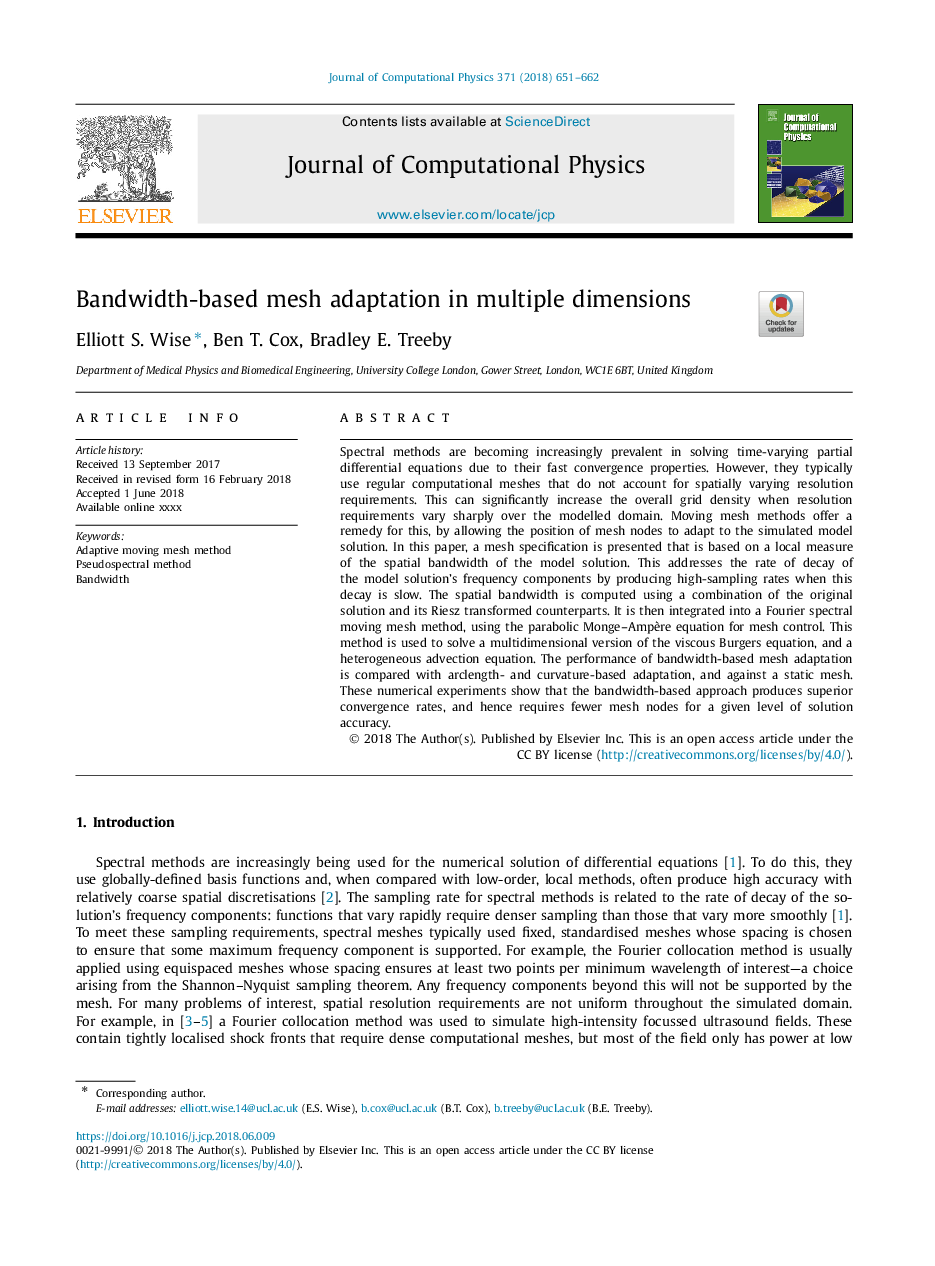| Article ID | Journal | Published Year | Pages | File Type |
|---|---|---|---|---|
| 6928686 | Journal of Computational Physics | 2018 | 12 Pages |
Abstract
Spectral methods are becoming increasingly prevalent in solving time-varying partial differential equations due to their fast convergence properties. However, they typically use regular computational meshes that do not account for spatially varying resolution requirements. This can significantly increase the overall grid density when resolution requirements vary sharply over the modelled domain. Moving mesh methods offer a remedy for this, by allowing the position of mesh nodes to adapt to the simulated model solution. In this paper, a mesh specification is presented that is based on a local measure of the spatial bandwidth of the model solution. This addresses the rate of decay of the model solution's frequency components by producing high-sampling rates when this decay is slow. The spatial bandwidth is computed using a combination of the original solution and its Riesz transformed counterparts. It is then integrated into a Fourier spectral moving mesh method, using the parabolic Monge-Ampère equation for mesh control. This method is used to solve a multidimensional version of the viscous Burgers equation, and a heterogeneous advection equation. The performance of bandwidth-based mesh adaptation is compared with arclength- and curvature-based adaptation, and against a static mesh. These numerical experiments show that the bandwidth-based approach produces superior convergence rates, and hence requires fewer mesh nodes for a given level of solution accuracy.
Related Topics
Physical Sciences and Engineering
Computer Science
Computer Science Applications
Authors
Elliott S. Wise, Ben T. Cox, Bradley E. Treeby,
